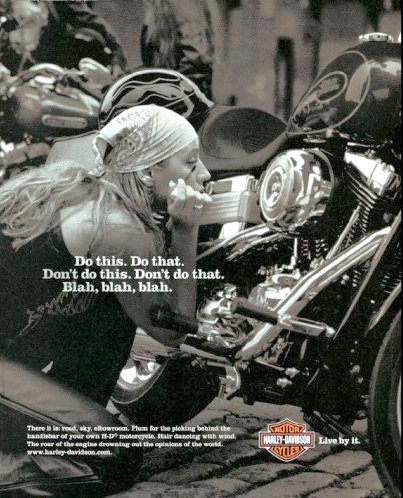– Alan Stamm, contributing writer
Alan Stamm Communications
Second of two parts. (See first post here.)
Brand images that gleam like a badge ─ all polished, prominent and distinctive – don’t belong only to Apple, Mercedes and Jaguar, Louis Vuitton and Tiffany.
Those examples are in Part 1 of this mini-series, but it’s not all about luxury. Harley-Davidson is as much a badge brand as Porsche. Nike and Abercrombie qualify, just as Dolce & Gabbana does. And depending on the type of party or bar, PBR and Grey Goose each are badge beverages.
These are among characteristics distinguishing brands that fit consumers like a badge of honor:
- Create a club: Wearing Nike’s swoosh is something we all can share with sports stars. “Just Do It” is a lifestyle statement and personal philosophy. Membership comes with the cap, shirt, shorts, gym bag or athletic shoes.
Harley-Davidson also earns brand bonding with a be-one-of-us image. Ad taglines include “Escape,” “Stop Dreaming” and “Notorious Since 1903.” An application lets 3.9 million Facebook fans review ad briefs, submit ideas and vote on submissions from other loyalists. “Harley-Davidson riders view the Harley brand of motorcycle as a symbol of America, freedom and rebellion,” Callen writes in his marketing book. “They wear clothing and get tattoos that proudly show off the brand. They are the brand and the brand is them.” - Generate passion: Pabst Blue Ribbon, brewed since 1893, became a self-propelled badge brand around 2002 when urban hipsters latched onto its retro cans, low price and working-class image. “The brand simply paid attention to how it was being used in the marketplace and acted swiftly to fan the flames,” Advertising Age notes in an “America’s Hottest Brand Case Study.” The article adds: “Sales soared [during the recession] as consumers forced to trade down opted for the one cheap beer with ‘badge value.’ ” The case study admires “a well-executed product placement” in Clint Eastwood’s 2008 film Gran Torino. Last fall, the brewery created a three-minute YouTube video of California skateboarder Ron Whaley titled “Cruzin with Pabst Blue Ribbon and Santa Cruz.” Photos from passionate customers are on the company’s website and Facebook page.
- Get personal: “Why should I be your Tiger?” Prince Fielder asks in a current commercial, playing off three words that scored a hit when we introduced them in a 2005 campaign, bringing the team closer to home. “Who’s Your Tiger?” spread to homemade signs, news headlines and statewide conversations by encouraging a personal badge of loyalty. The three-word question waves from lamppost banners outside Comerica Park alongside players’ names and faces.
- Similarly, our work for the Detroit Red Wings includes a theme reminding even casual local fans that the team is part of where we live: “They’re history. Skills. Heart. And they’re ours. It’s more than hockey.”
Messages vary as widely as badge brands themselves. But all work to “move beyond customer retention, which is merely a behavior, to generating customer commitment, delight and even evangelism,” as William McEwen says in a Gallup Management Journal article, “Getting Emotional About Brands.” At that level, a brand seems “essentially irreplaceable . . . a perfect fit with the customer’s personal needs,” he adds.
What brands fit you like a badge?
Pabst Blue Ribbon: An America’s Hottest Brands Case Study: http://adage.com/article/special-report-americas-hottest-brands-2009/pabst-blue-ribbon-america-s-hottest-brands-case-study/140481/
Getting Emotional About Brands: www.adobe.com/engagement/pdfs/gmj_getting_emotional.pdf

